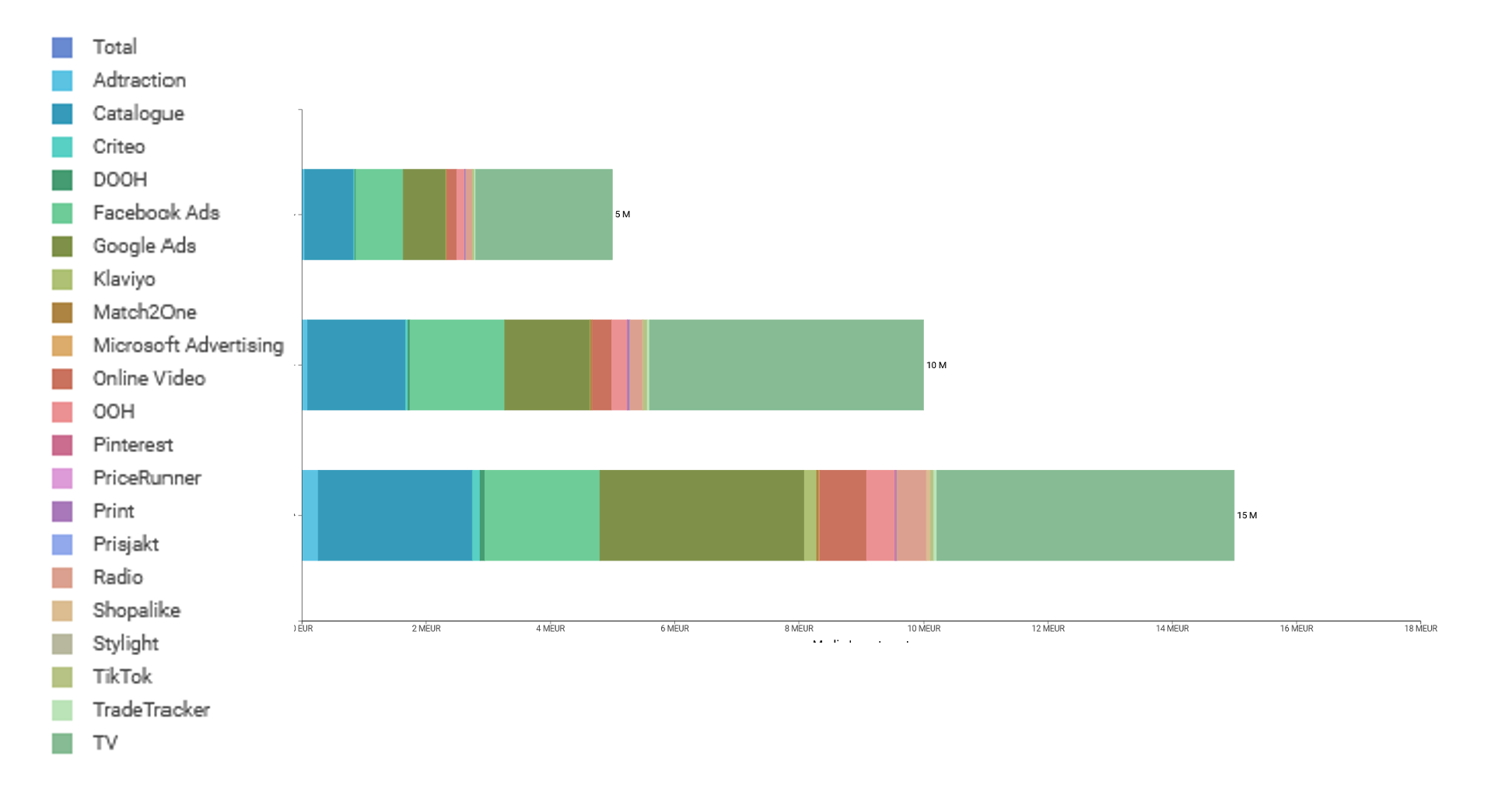How Much of Your Black Friday Sales Are Marketing-Driven?
Black Friday isn’t just a day anymore—it’s a full-blown phenomenon. What started as a 24-hour shopping frenzy has morphed into “Black Week,” where retailers offer deep discounts and irresistible promotions for days on end. We all love some discounts right? However, for retailers it’s the ultimate sales event, where a significant chunk of annual revenue can be made in a matter of hours. But behind the excitement, there’s a tough question marketers are grappling with: How much of these booming sales are driven by savvy marketing campaigns, and how much is simply the result of slashing prices?
The Black Friday Dilemma
We know, marketers pour time, money and creativity into Black Friday campaigns, hoping to capture the attention of shoppers looking for a great deal. But here’s the kicker: Would those sales have happened anyway, even without the ads, just because the discounts were too good to pass up?
This leads to the million-dollar question: Was your Black Friday campaign truly profitable? Or did discounts steal the spotlight? Understanding what really drove your sales—whether it was your marketing magic or irresistible bargains—can make all the difference in planning your strategy for next year.
Marketing Mix Modeling (MMM) can be a game-changer when it comes to separating the impact of your marketing from discounts. It helps you see exactly how much of your sales are truly driven by your campaigns versus those that happened because shoppers couldn’t resist a great deal.
In this blog post we will discuss exactly that! How can MMM help you differentiate between marketing driven sales and discount driven sales. Also, we can even do one better, MMM can help you see your base sales — the sales that would have happened anyways, without any marketing.
Why Do We Even Shop During Black Friday?
When it comes to Black Friday, one of the big questions for marketers is whether shoppers are buying because of your marketing campaigns or simply responding to deep discounts. While promotions play a huge role in driving sales, it’s worth digging into the psychology behind Black Friday shopping to understand how much influence marketing truly has.
There are several studies that dive into why people shop and how the act of buying—especially during sales—triggers a dopamine release, making Black Friday a perfect storm for spending. Shoppers are drawn to the sense of achievement that comes from scoring a deal, which can often outweigh logical decision-making. Black Friday deals are marketed as once-a-year opportunities, playing into FOMO (Fear of Missing Out) and loss aversion. The idea that a deal won’t last long creates urgency and drives people to act quickly, often buying more than they originally planned.
Then there’s the concept of shopping momentum—once people make their first purchase, they’re psychologically primed to keep buying. Words like “sale” and “deal” trigger the brain’s reward centers, making shoppers feel good, and this can be further amplified by strategic marketing and promotions.
Should you invest in marketing during Black Friday if people seem to be conditioned to shop anyways? Definitely YES! After all, Black Friday isn’t just about sales; it’s a prime opportunity to boost brand awareness and attract new customers who may stick around long after the discounts disappear.
Breaking Down Sales: Marketing vs. Promotions vs. Base
When it comes to Black Week, figuring out what’s driving your sales is more important than ever. Are customers buying because of your marketing campaigns, the deep discounts, or would they have made the purchase anyway? Breaking down these three factors—marketing, discounts, and base sales—gives you a clearer picture of what’s really working and helps you optimize your marketing spend.
Base sales (those that happen without any discounts or marketing) are generally higher during Black Week than at other times of the year. Why? Because shoppers are smart. They often delay purchases, saving up for November when they know they’ll get the best deals. This pent-up demand builds as people look to get a jump on their Christmas shopping, so when Black Week hits, they’re ready to buy, even without flashy marketing or deep discounts driving them.
When it comes to promotions, it’s no surprise that they drive a lot of incremental sales during Black Friday. But the real question is: Are you optimizing those promotions for profit? For example, would a 20% discount do the trick, or do you really need to offer 30% off to stay competitive? The more important thing isn’t just driving volume but maximizing margin. With MMM, you can figure out how much sales you might lose with a smaller discount and whether that’s worth it for the higher profit margin.
Then there’s media. During Black Week, ads tend to be more efficient than at any other time of the year. Shoppers have their eyes peeled for deals, and they’re more responsive to ads because they’re already in a buying mindset. This means that even though ad costs are higher, you might still get more bang for your buck compared to other months.
Below is a sample chart from our UI that illustrates base sales, promotion-driven sales, and marketing (media) sales during Black Friday week compared to other weeks. As expected, promotions drive a significant boost in incremental sales, but interestingly, base sales are also higher than usual. This means your goal should be to maximize both to stay competitive while maintaining profitability. Black Week is the perfect opportunity to not only drive immediate sales but also to attract new customers and increase brand awareness. Use this time strategically to balance growth and profit.
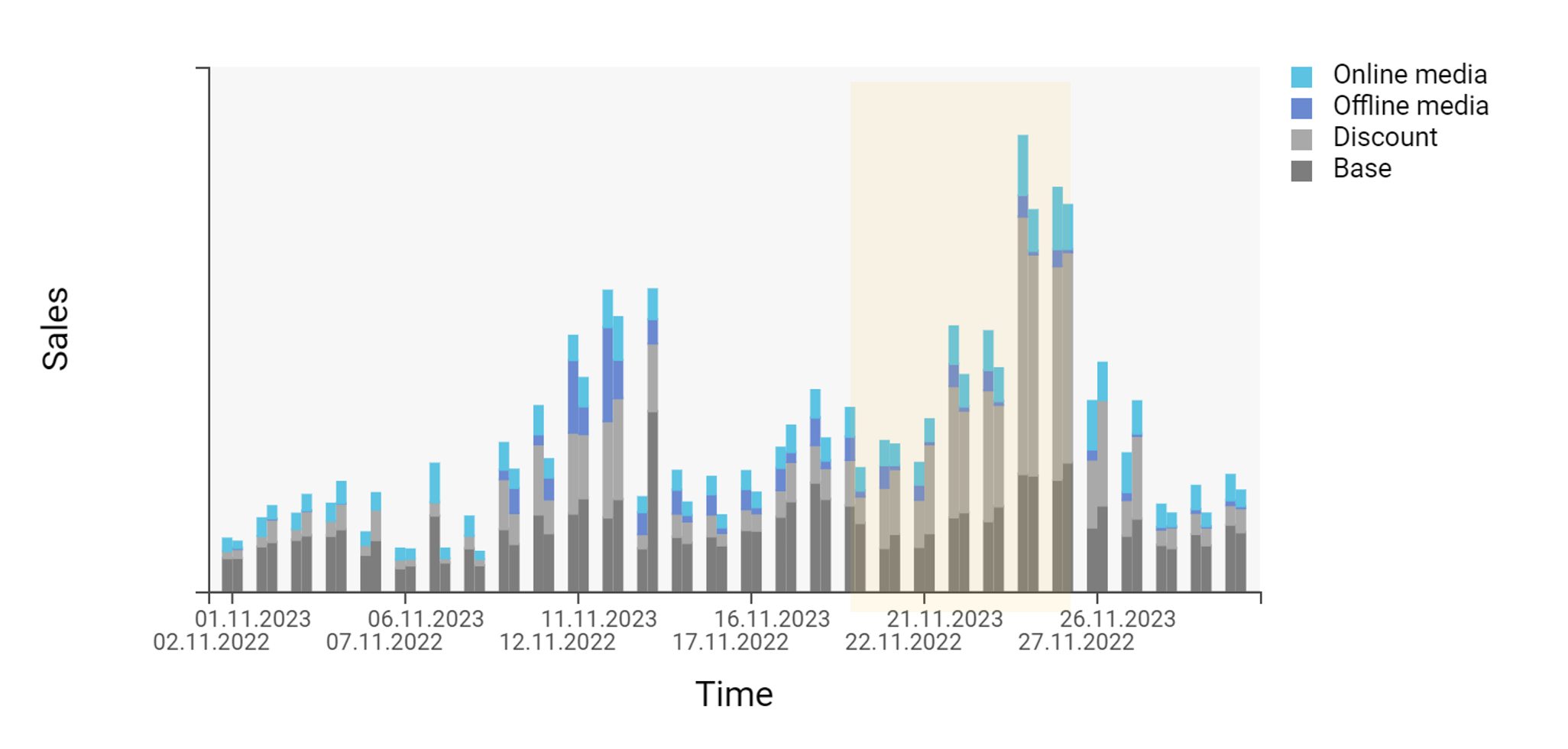
Spending on Media During Black Week: Is it a good idea?
As you saw in this first example, the media-driven sales seem to stay steady, with no significant shift compared to other weeks. At first glance, you might think this suggests that investing in media during Black Week isn’t worth it. But hold that thought—let’s take a look at another example. In the chart below you’ll notice a significant spike in media-driven sales during Black Week, showing just how powerful your marketing efforts can be when aligned with heightened consumer demand. It all depends on the context, your industry, your budget allocation, and other external factors, and that’s why analyzing your media performance from multiple angles is so crucial. This is why it is important to choose an MMM provider that has experience in your specific industry.
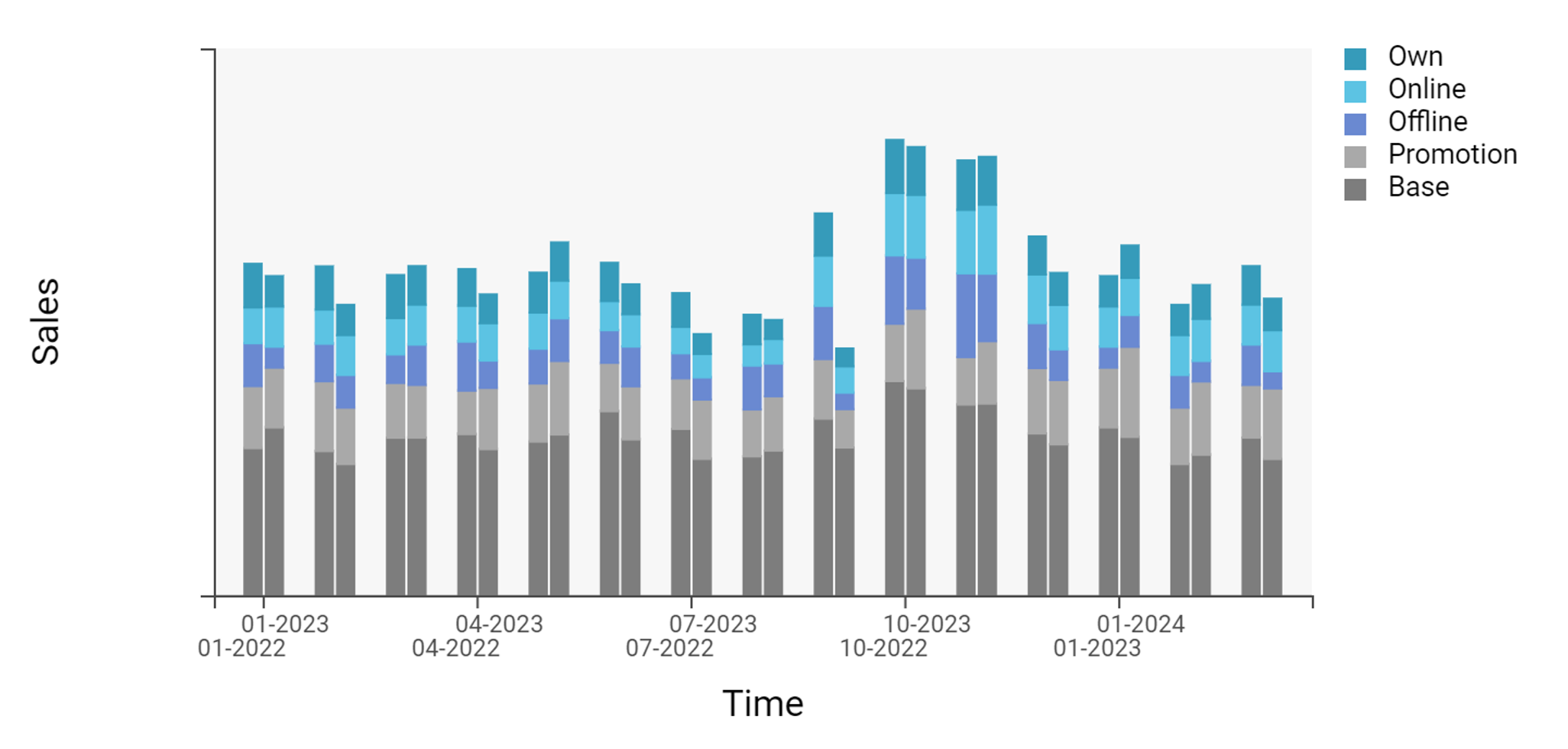
Let’s take a look at the media ROI during black week and overall the month of November. Even though promotions heavily impact incremental sales, media ROI in November is often one of the highest ones when compared to other months. Why? Because shoppers are laser-focused on finding deals, making them much more responsive to marketing efforts. Despite discounts being a dominant factor behind the Black Week sales, your media campaigns can still deliver impressive returns, showing that investing in ads during Black Week can really pay off.
Below you have two different simulated examples based on our experience with our clients:
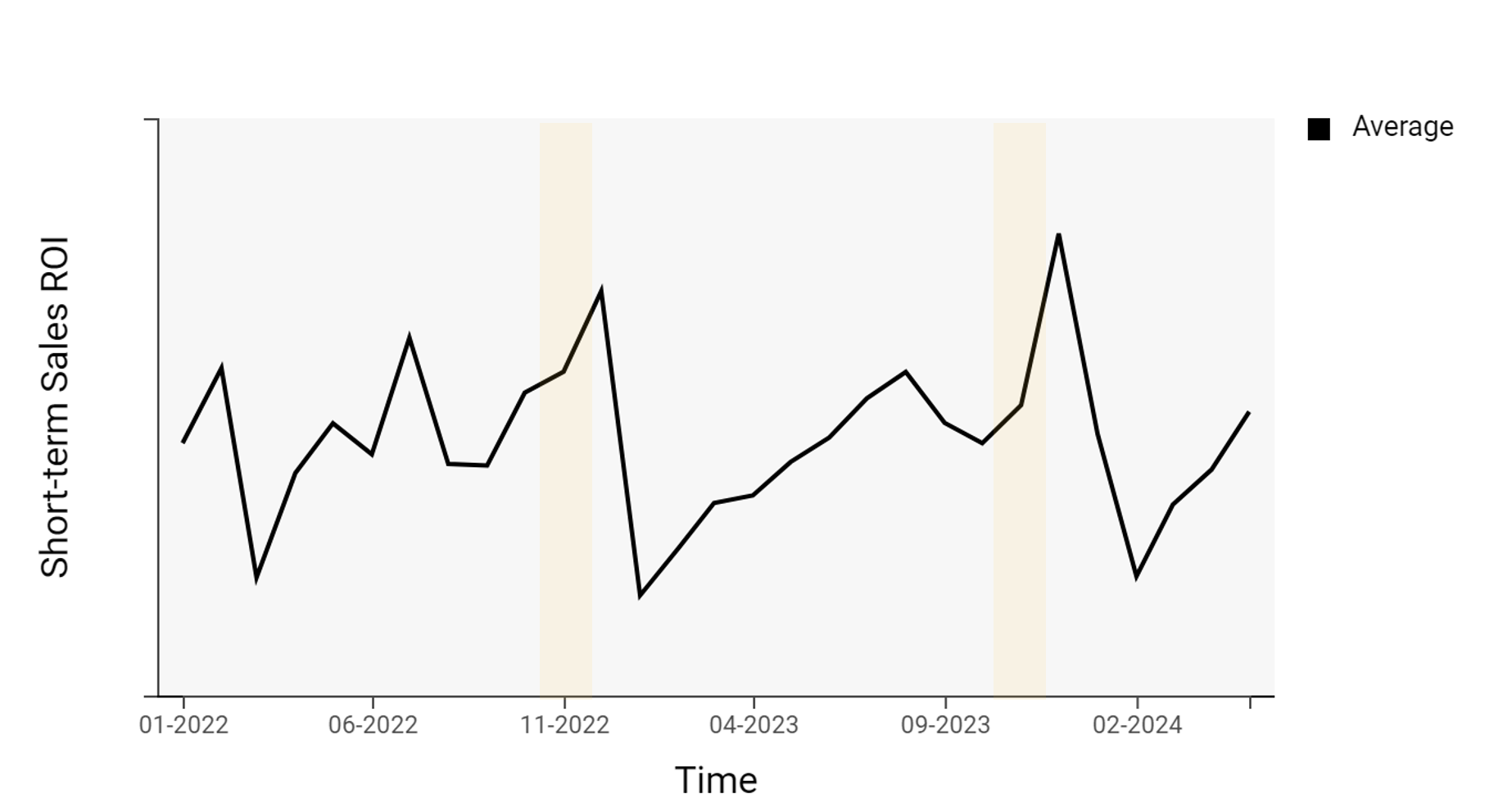
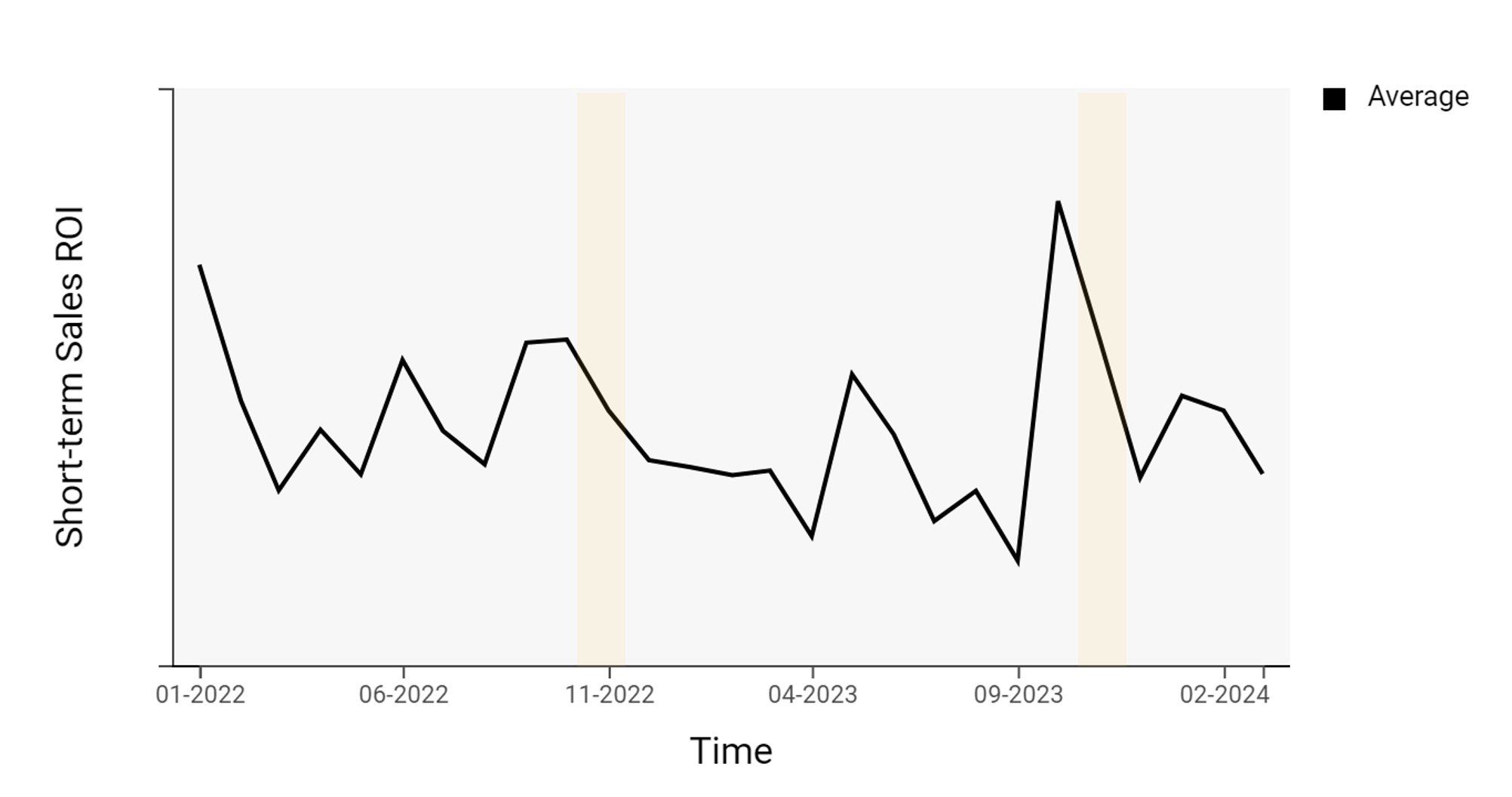
When looking at media ROI during Black Week, there are a few key reasons why it tends to be higher in November than any other time of the year:
- Higher Consumer Intent: Shoppers are actively hunting for deals, which makes them more responsive to ads. This means your media campaigns work harder and deliver more.
- Increased Traffic: Black Friday and Black Week bring in a flood of both online and in-store traffic, so your ads are reaching a much larger, highly engaged audience, boosting their impact.
- During Black Week: Customers often make faster purchasing decisions due to limited-time offers and promotions. This urgency leads to quicker conversions, which in turn improve the efficiency of your media spend.
- Optimized Ad Targeting: With consumers on the lookout for deals, your ad targeting can be more precise resulting in higher engagement and better conversion rates.
- Seasonal Brand Awareness: Even customers who don’t usually interact with your brand are exposed to your ads during this peak shopping season. Therefore, your will notice an increase in brand visibility which contributes to your ROI.
The Impact of Competitive Pressure and the Cost vs. Reward Dilemma
We’ve established that investing in marketing during Black Week can lead to profitable results, but ROI alone shouldn’t be the only driver of your marketing spend. There’s also the competitive pressure to consider. When your competitors are flooding the market with ads, the instinct is to keep up, if only to maintain visibility. But is it worth the cost, especially when ad prices soar during this time? The key question becomes: how do you compete without overextending your budget?
MMM can be a game-changer here. Not only can it help you forecast how your marketing spend will affect overall sales, but it also offers insights into how campaigns impact long-term brand performance. This is crucial because, while investing in marketing during Black Friday is certainly profitable, it’s not just about immediate sales. Increasing your brand’s visibility during this highly competitive period is a smart move—but you need to do it in a controlled way in order to minimize the risk. MMM allows you to create a strategy that balances immediate ROI with long-term brand health, so that your marketing dollars are working efficiently.
This leads to the cost vs. reward dilemma many marketers face during Black Week. You need to decide how much to invest in media without eroding your profitability. Sure, heavy discounts might drive higher sales, but they also reduce your margins. At the same time, the rising costs of ads make it more difficult to maintain a positive return on marketing investments. It’s a balancing act: spend too much on ads, and you risk overspending for diminishing returns; spend too little, and you lose the chance to capture customer attention during one of the busiest shopping periods of the year.
At the end of the day, marketers need to carefully balance all these factors. When using tools like MMM, you can fine-tune both your media and promotional strategies to find the sweet spot with tools such as scenario planning and diminishing return curves. This way, you’re not only maximizing your ROI but also staying competitive and profitable in the fast-paced, high-stakes environment of Black Week.
The Role of MMM vs. Attribution in Black Week Sales Analysis
What if you're not using MMM? Even worse—what if you think you don’t need it because you already have an Attribution solution in place? SCARY! Here’s why:
Attribution models can be helpful in certain situations, but they really struggle during Black Week. One of the biggest challenges is figuring out whether your sales are coming from your marketing efforts or if people are just snapping up deals because of the big discounts. Attribution alone can't separate the effect of your ads from the draw of those discounts, which makes it hard to tell what's actually driving your sales. Therefore, you are going to be navigating unknown waters during Black Week if you’re planning on relying on Attribution alone.
MMM looks at the bigger picture, analyzing different factors to give you a clearer idea of how your campaigns are actually performing. It can separate the impact of your marketing from other things like discounts or base sales, so you get a true sense of how effective your Black Week campaigns really are. Do you want to know how it works? Book a demo with us and we will show you how MMM can specifically help your business during Black Week!
While attribution models are great for tracking customer touchpoints, they offer a limited scope, especially during periods of high promotion like Black Friday. They may tell you how much revenue was attributed to certain channels, but was the real driver of this revenue really the marketing efforts, or was it only the great Black Week discount? MMM, on the other hand, evaluates overall effectiveness, considering all variables, so you can make smarter decisions about where to invest your marketing dollars (or euros or any other currency you might be using).
Take Paid Social channels as an example. Their targeting capabilities are fantastic at reaching users with strong buying intent. But when attribution shows a purchase tied to Paid Social, was that sale really driven by the ad? Or was it simply that the shopper, already set on buying, would’ve made the purchase anyway? These are the types of insights that MMM can help uncover, giving you a clearer picture of what’s actually moving the needle.
Conclusion: Should You Invest in Black Week Campaigns?
With all the excitement around Black Week, it's easy to question whether big marketing campaigns are worth the investment. Discounts and promotions often seem to be doing the heavy lifting when it comes to driving sales. But here’s the thing: while promotions definitely play a crucial role, marketing still has a big impact, especially when it comes to making your brand stand out in a crowded marketplace and increasing brand awareness. The trick is finding the right balance between your marketing and discounts to not only boost short-term sales but also drive long-term growth. How do you find that balance? Well using MMM obviously!
MMM gives you the insights you need to see how your marketing is performing, even when deep discounts are in play. With MMM, you can separate the effects of your media campaigns from the power of promotions, helping you invest in Black Week campaigns in a way that’s both effective and efficient.
At the end of the day, maximizing Black Friday profits comes down to striking that perfect balance. Yes, discounts can generate immediate sales, but you don’t want to sacrifice your margins. And yes, marketing can bring in new customers and elevate your brand, but only if it’s done smartly.
Last but not least, let’s get in touch if you’re ready to take your marketing strategy to the next level!
You May Also Like
These Related Stories
-1.jpg?width=1500&height=1000&name=influencer-marketing-job-concept%20(1)-1.jpg)
How to track Influencer Marketing performance with MMM
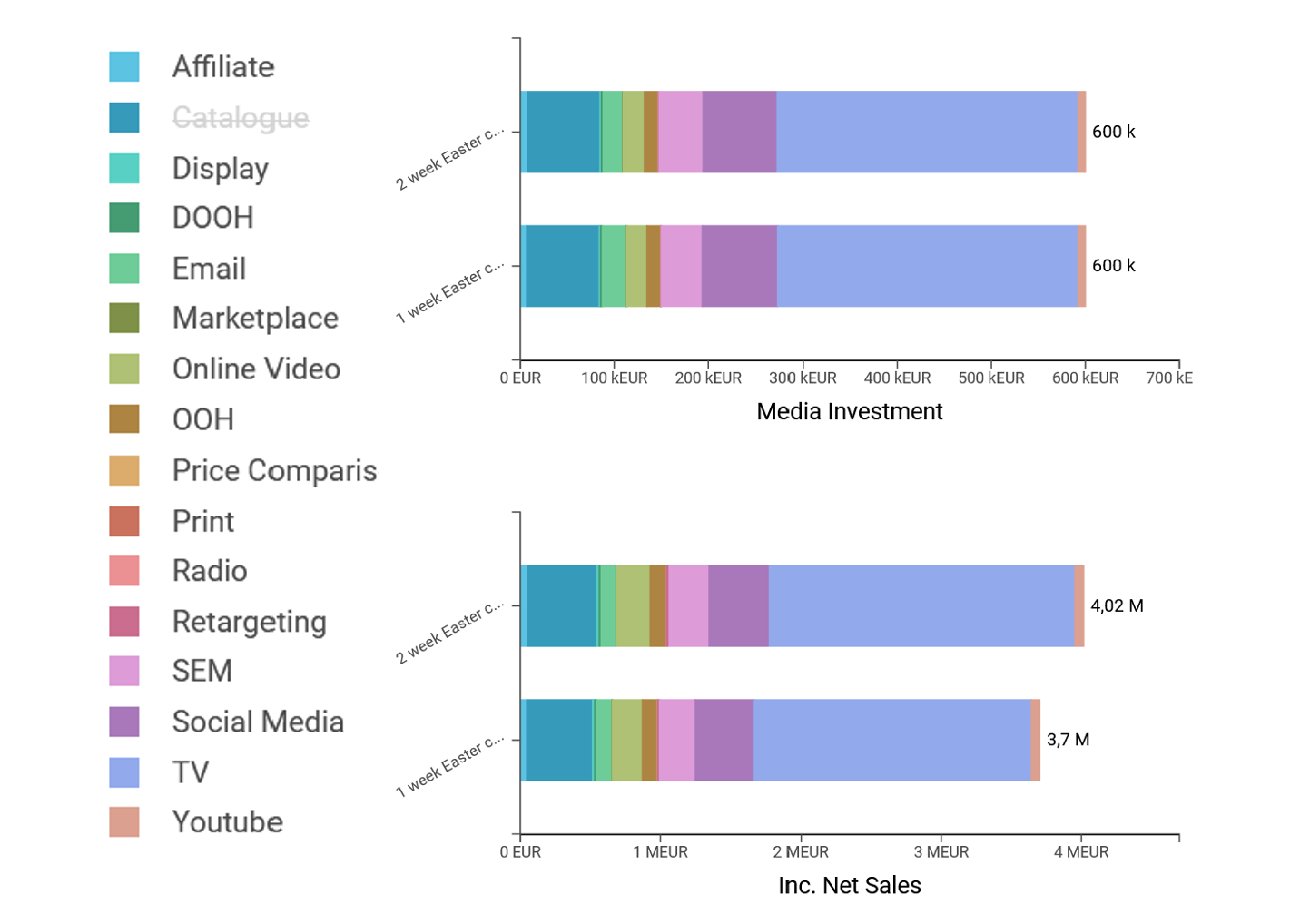
How Does Marketing Mix Modeling Optimize Monthly and Campaign Budgets?
